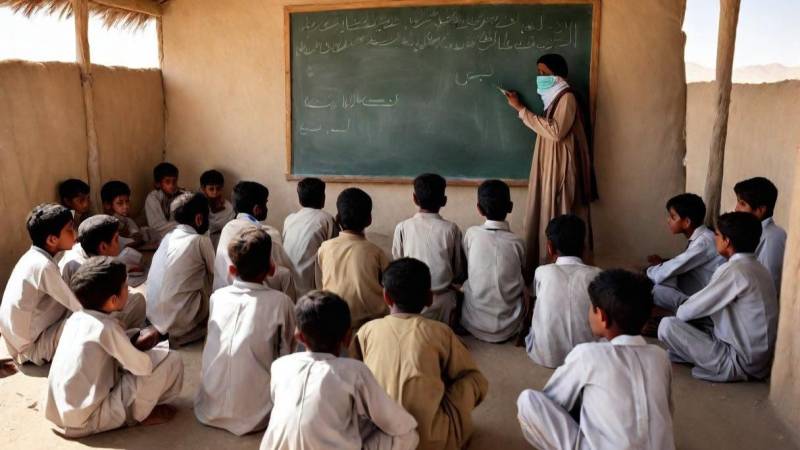
If you travel around 90 kilometres west of Turbat city in Balochistan, along the banks of the Nihing River, you will come to a small union council called Tump. Compared to many parts of Balochistan, which live in remote locations, Tump is relatively closer to larger concentrations of human habitation. Yet, it lacks access to sufficient educational facilities.
Despite being home to a significant population of around 146,000, the area languishes in the shadows of indifference from the relevant authorities. This apathy casts a dark shadow over the educational landscape of Tump, leaving its residents grappling with a myriad of challenges.
Students living in Tump are the most affected by this neglect. The union council has a solitary high school with just three teachers. The educational infrastructure in Tump is grossly inadequate to meet the community's educational needs, jeopardising the academic prospects of its youth.
This dire shortage of teaching staff compromises the quality of education imparted and undermines the students' holistic development. Students are often left with the short end of the stick, with syllabi left incomplete by the end of the school year, depriving students of essential learning opportunities and impeding their academic progress. Consequently, the youth of Tump is left grappling with an uncertain future devoid of the foundational knowledge and skills necessary to navigate the complexities of modern life.
The short cards dealt to the students of Tump do not stop at a few teachers for the relatively large student body. In addition to the acute shortage of teachers, the school in the union council is woeful. The dearth of classrooms forces students to endure the harsh elements, with many compelled to attend classes in makeshift outdoor settings. This becomes a problem when the temperature soars to highs of 48 degrees Celsius in the summer.
This substandard learning environment not only hampers concentration levels of students but also detracts from the overall educational experience. The absence of conducive learning spaces robs students of the opportunity to engage fully with their studies, perpetuating a cycle of academic underachievement and disengagement. Moreover, the inadequate infrastructure poses significant safety concerns for the students, further compounding their educational woes.
The repercussions of this educational neglect extend far beyond the confines of the classroom, permeating into the socioeconomic fabric of Tump. The lack of access to quality education perpetuates a cycle of poverty and marginalisation, condemning generations of Tump's youth to a life of limited opportunities and diminished prospects. Without the requisite educational foundation, these vulnerable children are at risk of falling prey to the snares of exploitation and deprivation, resorting to menial labour and begging to eke out a meagre existence.
Education empowers individuals to think critically, solve problems, and envision a better tomorrow, laying the foundation for sustainable development and social progress. It can serve as a potent catalyst for change, offering a pathway to empowerment and socioeconomic mobility for the disenfranchised youth of Tump. If we invest in education for these children, we can equip them with the tools they need to break free from the shackles of poverty and chart their own destinies; it could change not only their fate but also that of the region.
In light of the urgent need to address the educational crisis in Tump, I call upon the government of Balochistan to take immediate and decisive action. The authorities must allocate sufficient resources and manpower to bolster the educational infrastructure of Tump, including recruiting additional teachers and constructing new classrooms.
Furthermore, initiatives should be undertaken to enhance the quality of education and promote student engagement, such as teacher training programs and extracurricular activities. Additionally, efforts should be made to address the underlying socioeconomic factors contributing to educational deprivation, including poverty alleviation measures and community outreach programmes.
Tump's plight is a stark reminder of the profound inequities that persist within our educational system. The systemic neglect and indifference have deprived generations of Tump's youth of their fundamental right to education, perpetuating cycles of poverty and marginalisation. But there exists an opportunity for reparations and a transformative force capable of catalysing change and empowering individuals to realise their full potential. As a society, it is incumbent upon us to rise to the occasion and extend a helping hand to the marginalised communities of Tump.

